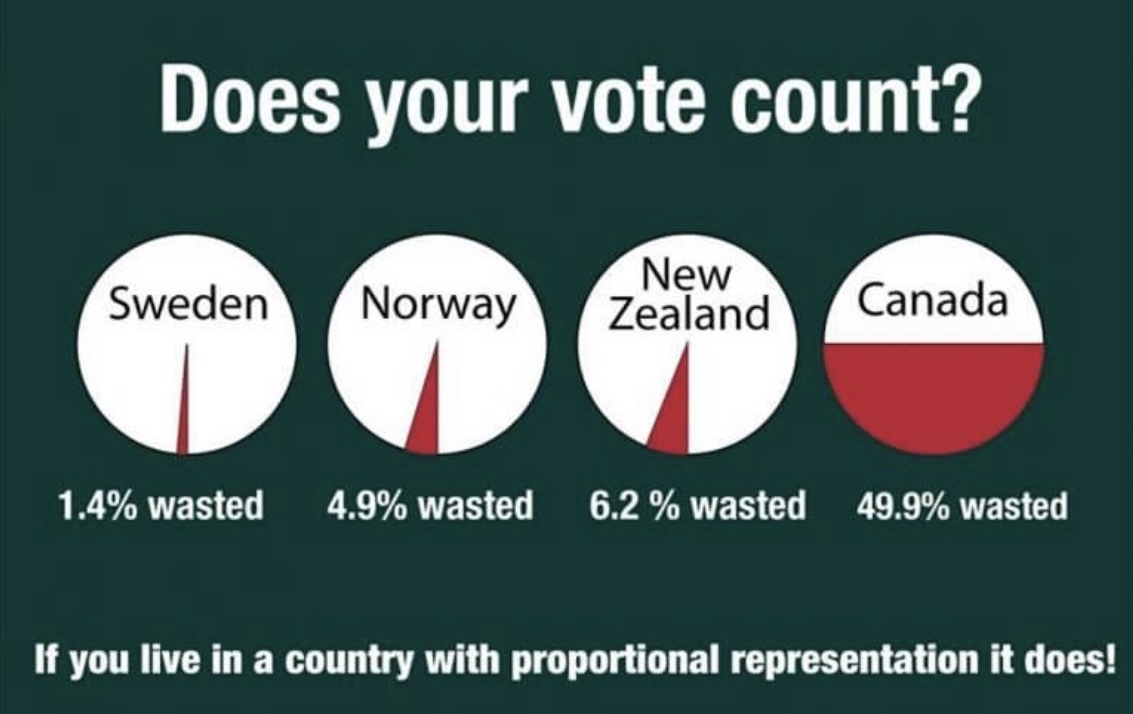Fairvote Canada
What is This Group is About?/De Quoi Parle ce Groupe?
The unofficial Lemmy movement to bring proportional representation to all levels of government in Canada.
Voters deserve more choice and accountability from all politicians.
Le mouvement non officiel de Lemmy visant à amener la représentation proportionnelle à tous les niveaux de gouvernement au Canada.
Les électeurs méritent davantage de choix et de responsabilité de la part de tous les politiciens.
- What is First-Past-The-Post (FPP)?
- What is Proportional Representation (PR)?
- What is a Citizens’ Assembly?
- Why referendums aren't necessary
Related Communities/Communautés Associées
Resources/Ressources
Official Organizations/Organisations Officielles
- Fair Vote Canada
- Fair Voting BC
- Charter Challenge for Fair Voting
- Make Votes Equal / Make Seats Match Votes
- FairVote US
- Make Votes Matter UK
We're looking for more moderators, especially those who are of French and indigenous identities.
Nous recherchons davantage de modérateurs, notamment ceux qui sont d'identité française et autochtone.
view the rest of the comments

What’s the math on this?
https://www.fairvote.ca/19/05/2022/mps-speak-up-for-proportional-representation-in-the-house-of-commons/
https://en.m.wikipedia.org/wiki/First-past-the-post_voting
Sorry, I can't give you the math because I'm so bored after reading three plodding articles about voting.
The gist is that fptp voting like the US or Canada has is inferior to ranked choice voting, which means your preferences are always considered even if your first choice doesn't win.
I was really looking forward to that bath though 🥺
J/k thanks
Scrub me daddy
Haha, the voting explanations were so boring I couldn't bother to check for autocorrect errors
I think it's not a first past the post criticism but a single member districts criticism.
An example of what I mean: you have a body made up of 100 representatives. You can divide the body into 100 voting districts. In each one, the winner gets the seat. Even if you have something like RCV, you can have 49% of people vote for party a and 51% vote for party b. If the voting districts are pretty much the same, then party b will have all the seats and 49% of people won't have someone they voted for in power. With proportional representation and multiple member districts, in the case where roughly 50% of people like party a and 50% like party b, the representatives will be roughly 50% party a and 50% party b.
And it can get worse if the districts are different. If you pack voters strategically, it's possible for a majority government to form with only slightly over 25% of the popular vote. (Or lower, with more than two parties)
Solid point, well written, way more informative than every article I read, haha, thank you.